5: Culture
- Page ID
- 151316
\( \newcommand{\vecs}[1]{\overset { \scriptstyle \rightharpoonup} {\mathbf{#1}} } \)
\( \newcommand{\vecd}[1]{\overset{-\!-\!\rightharpoonup}{\vphantom{a}\smash {#1}}} \)
\( \newcommand{\dsum}{\displaystyle\sum\limits} \)
\( \newcommand{\dint}{\displaystyle\int\limits} \)
\( \newcommand{\dlim}{\displaystyle\lim\limits} \)
\( \newcommand{\id}{\mathrm{id}}\) \( \newcommand{\Span}{\mathrm{span}}\)
( \newcommand{\kernel}{\mathrm{null}\,}\) \( \newcommand{\range}{\mathrm{range}\,}\)
\( \newcommand{\RealPart}{\mathrm{Re}}\) \( \newcommand{\ImaginaryPart}{\mathrm{Im}}\)
\( \newcommand{\Argument}{\mathrm{Arg}}\) \( \newcommand{\norm}[1]{\| #1 \|}\)
\( \newcommand{\inner}[2]{\langle #1, #2 \rangle}\)
\( \newcommand{\Span}{\mathrm{span}}\)
\( \newcommand{\id}{\mathrm{id}}\)
\( \newcommand{\Span}{\mathrm{span}}\)
\( \newcommand{\kernel}{\mathrm{null}\,}\)
\( \newcommand{\range}{\mathrm{range}\,}\)
\( \newcommand{\RealPart}{\mathrm{Re}}\)
\( \newcommand{\ImaginaryPart}{\mathrm{Im}}\)
\( \newcommand{\Argument}{\mathrm{Arg}}\)
\( \newcommand{\norm}[1]{\| #1 \|}\)
\( \newcommand{\inner}[2]{\langle #1, #2 \rangle}\)
\( \newcommand{\Span}{\mathrm{span}}\) \( \newcommand{\AA}{\unicode[.8,0]{x212B}}\)
\( \newcommand{\vectorA}[1]{\vec{#1}} % arrow\)
\( \newcommand{\vectorAt}[1]{\vec{\text{#1}}} % arrow\)
\( \newcommand{\vectorB}[1]{\overset { \scriptstyle \rightharpoonup} {\mathbf{#1}} } \)
\( \newcommand{\vectorC}[1]{\textbf{#1}} \)
\( \newcommand{\vectorD}[1]{\overrightarrow{#1}} \)
\( \newcommand{\vectorDt}[1]{\overrightarrow{\text{#1}}} \)
\( \newcommand{\vectE}[1]{\overset{-\!-\!\rightharpoonup}{\vphantom{a}\smash{\mathbf {#1}}}} \)
\( \newcommand{\vecs}[1]{\overset { \scriptstyle \rightharpoonup} {\mathbf{#1}} } \)
\( \newcommand{\vecd}[1]{\overset{-\!-\!\rightharpoonup}{\vphantom{a}\smash {#1}}} \)
\(\newcommand{\avec}{\mathbf a}\) \(\newcommand{\bvec}{\mathbf b}\) \(\newcommand{\cvec}{\mathbf c}\) \(\newcommand{\dvec}{\mathbf d}\) \(\newcommand{\dtil}{\widetilde{\mathbf d}}\) \(\newcommand{\evec}{\mathbf e}\) \(\newcommand{\fvec}{\mathbf f}\) \(\newcommand{\nvec}{\mathbf n}\) \(\newcommand{\pvec}{\mathbf p}\) \(\newcommand{\qvec}{\mathbf q}\) \(\newcommand{\svec}{\mathbf s}\) \(\newcommand{\tvec}{\mathbf t}\) \(\newcommand{\uvec}{\mathbf u}\) \(\newcommand{\vvec}{\mathbf v}\) \(\newcommand{\wvec}{\mathbf w}\) \(\newcommand{\xvec}{\mathbf x}\) \(\newcommand{\yvec}{\mathbf y}\) \(\newcommand{\zvec}{\mathbf z}\) \(\newcommand{\rvec}{\mathbf r}\) \(\newcommand{\mvec}{\mathbf m}\) \(\newcommand{\zerovec}{\mathbf 0}\) \(\newcommand{\onevec}{\mathbf 1}\) \(\newcommand{\real}{\mathbb R}\) \(\newcommand{\twovec}[2]{\left[\begin{array}{r}#1 \\ #2 \end{array}\right]}\) \(\newcommand{\ctwovec}[2]{\left[\begin{array}{c}#1 \\ #2 \end{array}\right]}\) \(\newcommand{\threevec}[3]{\left[\begin{array}{r}#1 \\ #2 \\ #3 \end{array}\right]}\) \(\newcommand{\cthreevec}[3]{\left[\begin{array}{c}#1 \\ #2 \\ #3 \end{array}\right]}\) \(\newcommand{\fourvec}[4]{\left[\begin{array}{r}#1 \\ #2 \\ #3 \\ #4 \end{array}\right]}\) \(\newcommand{\cfourvec}[4]{\left[\begin{array}{c}#1 \\ #2 \\ #3 \\ #4 \end{array}\right]}\) \(\newcommand{\fivevec}[5]{\left[\begin{array}{r}#1 \\ #2 \\ #3 \\ #4 \\ #5 \\ \end{array}\right]}\) \(\newcommand{\cfivevec}[5]{\left[\begin{array}{c}#1 \\ #2 \\ #3 \\ #4 \\ #5 \\ \end{array}\right]}\) \(\newcommand{\mattwo}[4]{\left[\begin{array}{rr}#1 \amp #2 \\ #3 \amp #4 \\ \end{array}\right]}\) \(\newcommand{\laspan}[1]{\text{Span}\{#1\}}\) \(\newcommand{\bcal}{\cal B}\) \(\newcommand{\ccal}{\cal C}\) \(\newcommand{\scal}{\cal S}\) \(\newcommand{\wcal}{\cal W}\) \(\newcommand{\ecal}{\cal E}\) \(\newcommand{\coords}[2]{\left\{#1\right\}_{#2}}\) \(\newcommand{\gray}[1]{\color{gray}{#1}}\) \(\newcommand{\lgray}[1]{\color{lightgray}{#1}}\) \(\newcommand{\rank}{\operatorname{rank}}\) \(\newcommand{\row}{\text{Row}}\) \(\newcommand{\col}{\text{Col}}\) \(\renewcommand{\row}{\text{Row}}\) \(\newcommand{\nul}{\text{Nul}}\) \(\newcommand{\var}{\text{Var}}\) \(\newcommand{\corr}{\text{corr}}\) \(\newcommand{\len}[1]{\left|#1\right|}\) \(\newcommand{\bbar}{\overline{\bvec}}\) \(\newcommand{\bhat}{\widehat{\bvec}}\) \(\newcommand{\bperp}{\bvec^\perp}\) \(\newcommand{\xhat}{\widehat{\xvec}}\) \(\newcommand{\vhat}{\widehat{\vvec}}\) \(\newcommand{\uhat}{\widehat{\uvec}}\) \(\newcommand{\what}{\widehat{\wvec}}\) \(\newcommand{\Sighat}{\widehat{\Sigma}}\) \(\newcommand{\lt}{<}\) \(\newcommand{\gt}{>}\) \(\newcommand{\amp}{&}\) \(\definecolor{fillinmathshade}{gray}{0.9}\)In this section, you will:
- learn about the four countries of the Levant, their famous cities, most famous historical places, and their traditional food and clothes.
The Levant
The Levant consists of four Arab countries, which are Syria, Lebanon, Jordan, and Palestine.

Countries of the Levant
| The Country Name in English | The Country Name in Arabic | The Name of the Capital in English | The Name of the Capital in Arabic | Flag |
|---|---|---|---|---|
| Syria |
سورية Souria |
Damascus |
دمشق Dimashq |
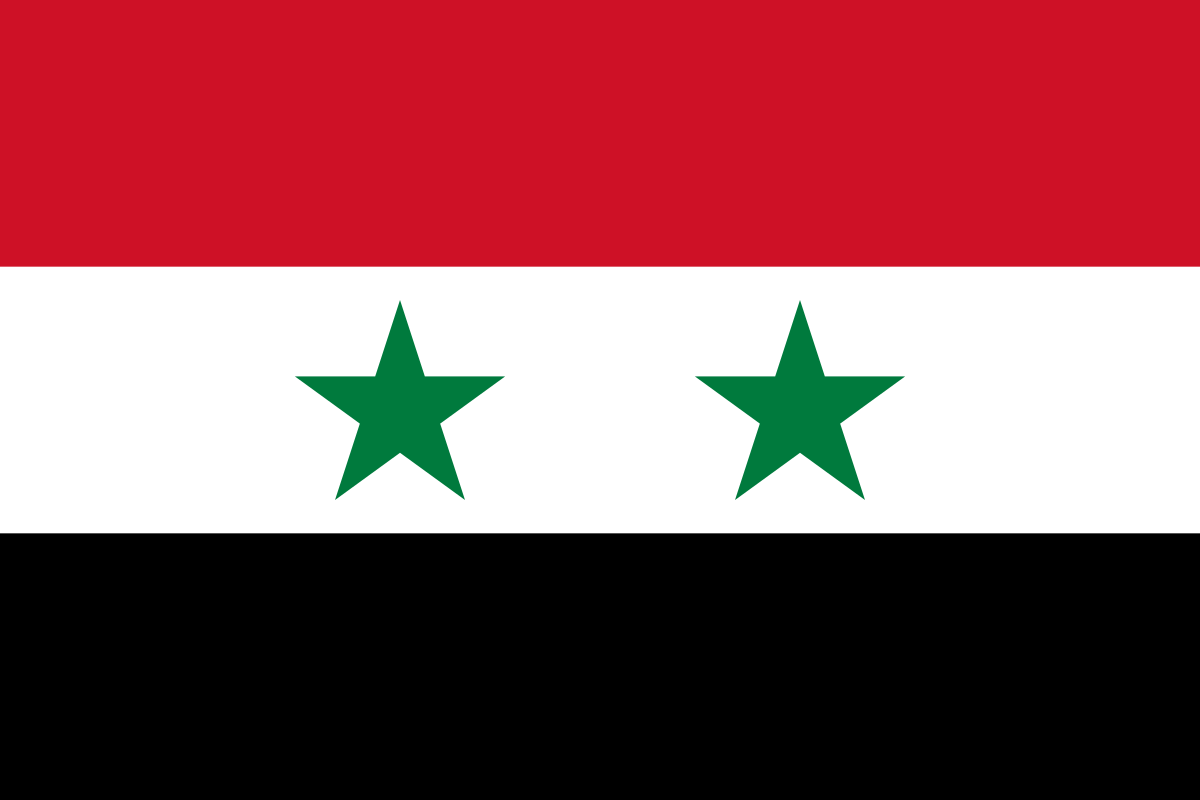
|
| Lebanon |
لبنان Lubnan |
Beirut |
بيروت Bayroot |
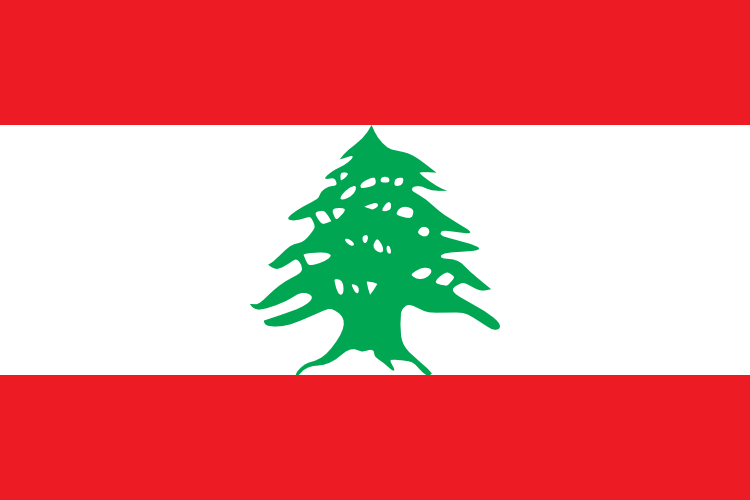
|
| Jordan |
الأردن Al Urdon |
Amman |
عمّان Amman |
.gif?revision=1)
|
| Palestine |
فلسطين Filasteen |
Jerusalem |
القدس Al Quds |
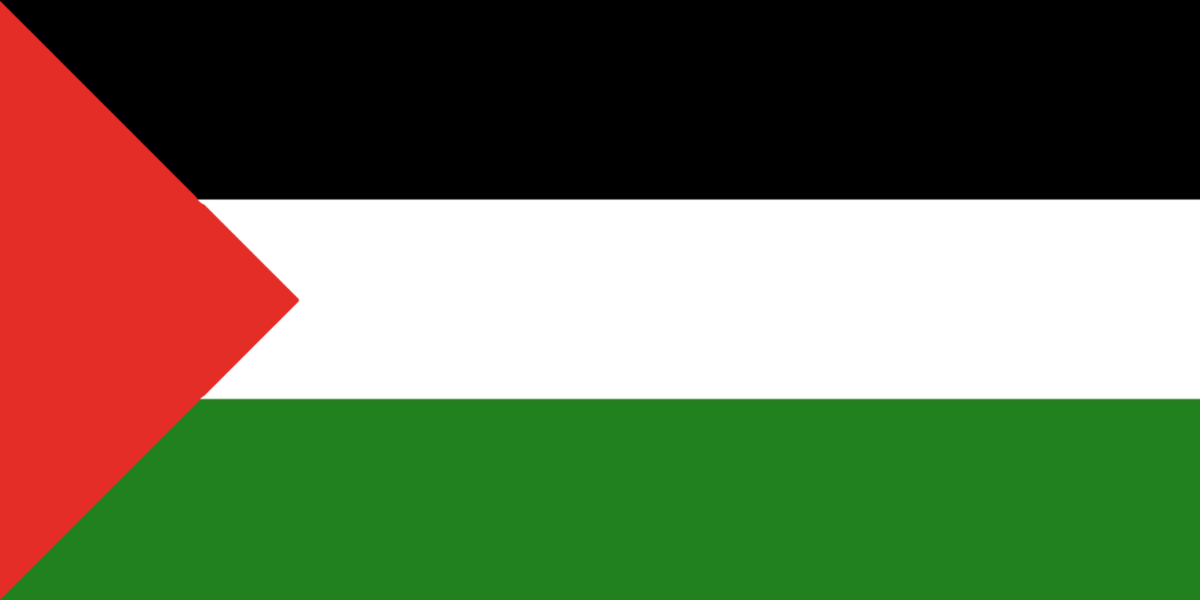
|
Countries and Famous Cities
Syria (Syrian Arab Republic)
The Syrian Arab Republic is an Arab country located in west Asia. It borders Turkey to the north, Lebanon and Palestine to the south-west, the Mediterranean Sea to the west, Jordan to the south, and Iraq to the east.
Population: 17.5 million (2020 estimate).
Capital: Damascus.
Currency: Syrian Pounds (SYP).
Official Language: Modern Standard Arabic.

| City Name | City Name in Arabic | Pronunciation | Image |
|---|---|---|---|
| Damascus | دمشق | Dimashq |
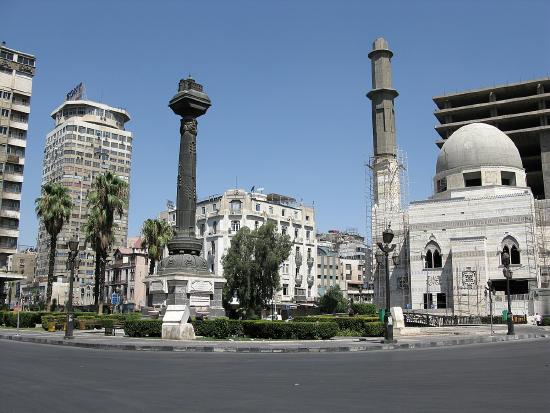
|
| Aleppo | حلب | Halab |
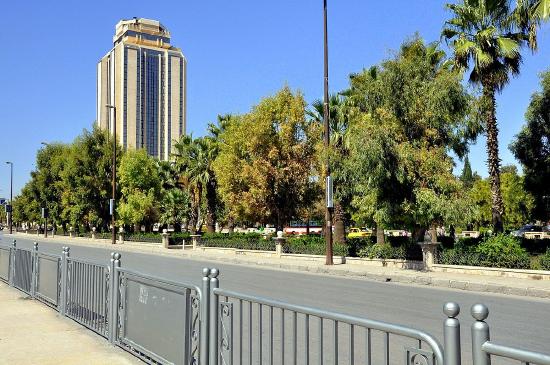
|
| Homs | حمص | Hims |
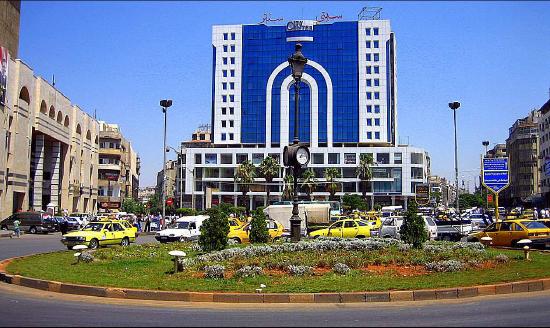
|
| Hama | حماة | Hama |

|
| Latakia | اللاذقيّة | Al Lathikiya |
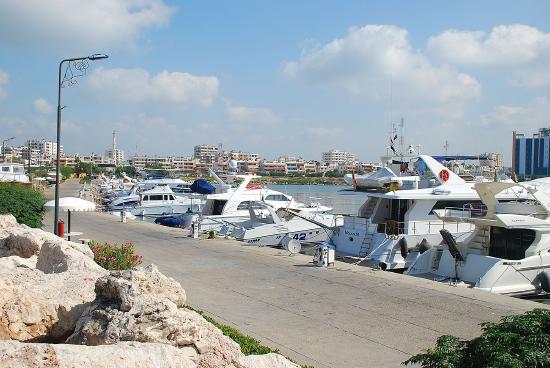
|
| Deir Ez Zour | دير الزور | Deir Ez Zour |

|
Lebanon (Republic of Lebanon)
The Republic of Lebanon is an Arab country located in west Asia. It borders Syria to the north and east, Palestine to the south,and the Mediterranean Sea to the west.
Population: 6.825 million (2020 estimate).
Capital: Beirut.
Currency: Lebanese Pounds (LBP).
Official Language: Modern Standard Arabic.
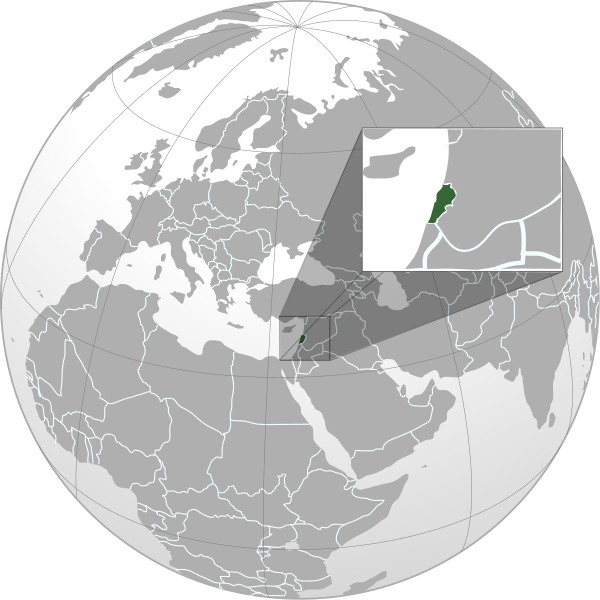
| City Name | City Name in Arabic | Pronunciation | Image |
|---|---|---|---|
| Beirut | بيروت | Bayroot |
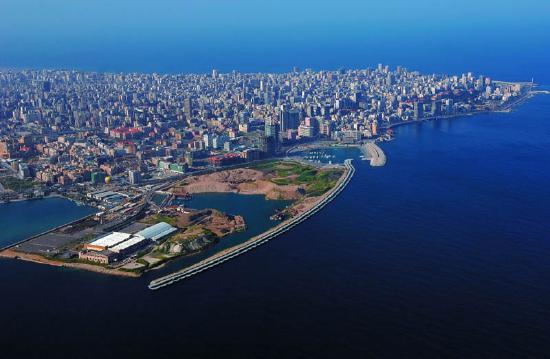
|
| Jounieh | جونية | Jounieh |

|
| Zahle | زحلة | Zahle |
|
| Tripoli | طرابلس | Trablos |
_-_El_Ma'rad_1.jpg?revision=1&size=bestfit&width=214&height=169)
|
| Byblos | جبيل | Jubeil |

|
| Baalbek | بعلبك | Baalbak |
.jpg?revision=1&size=bestfit&width=214&height=169)
|
Jordan (Hashemite Kingdom of Jordan)
The Hashemite Kingdom of Jordan is an Arab country located in west Asia. It borders Syria to the north, Palestine to the west, Saudi Arabia to the south and south-east, and Iraq to the north-east.
Population: 10.2 million (2020 estimate).
Capital: Amman.
Currency: Jordanian Dinar (JOD).
Official Language: Modern Standard Arabic.

| City Name | City Name in Arabic | Pronunciation | Image |
|---|---|---|---|
| Amman | عمّان | Amman |
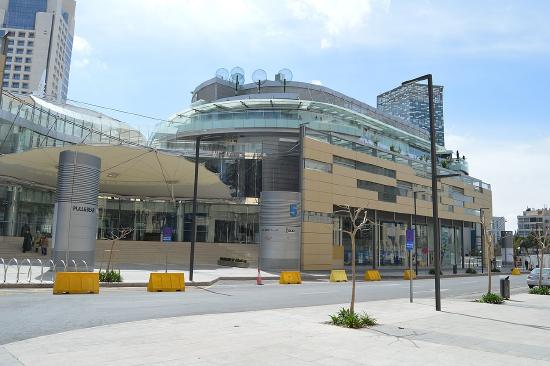
|
| As Salt | السلط | As Salt |

|
| Irbid | إربد | Irbed |

|
| Al Mafraq | المفرق | Al Mafraq |
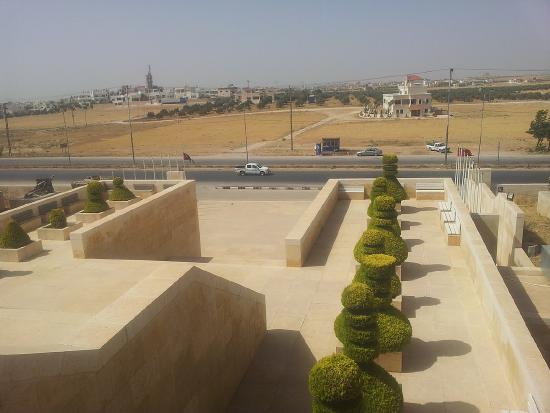
|
| Aqaba | العقبة | Al Aqaba |
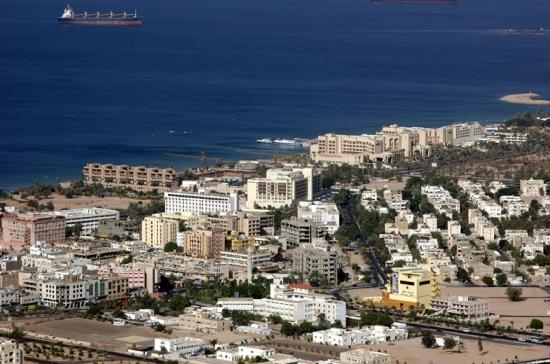
|
| Madaba | مأدبا | Ma'daba |
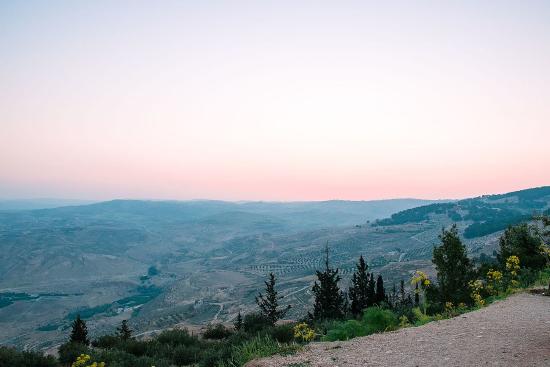
|
Palestine (State of Palestine)
The State of Palestine is an Arab country located in west Asia. It borders Lebanon to the north, the Mediterranean Sea to the west, Egypt to the south-west, Jordan to the east, and Syria to the north-east.
Population: 4.803 million (2020 estimate).
Capital: Jerusalem.
Currency: Palestine Pounds, Jordanian Dinar (JOD), Egyptian Pounds (EGP), and New Shekel (ILS).
Official Language: Modern Standard Arabic.

| City Name | City Name in Arabic | Pronunciation | Image |
|---|---|---|---|
| Jerusalem | القدس | Al Quds |
-View_of_the_Dome_of_the_Rock_%2526_Temple_Mount_02.jpg?revision=1&size=bestfit&width=214&height=169)
|
| Gaza | غزّة | Ghazza |
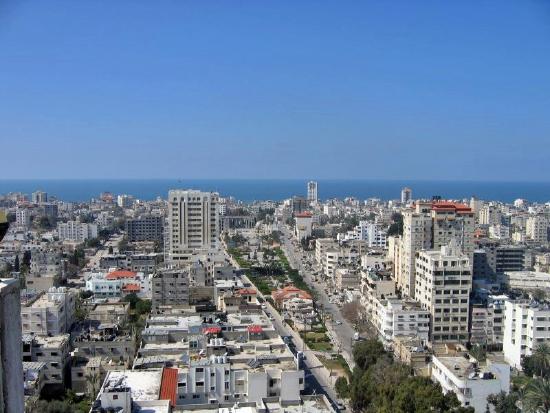
|
| Nablus | نابلس | Nablus |

|
| Khan Yunis | خان يونس | Khan Yunis |
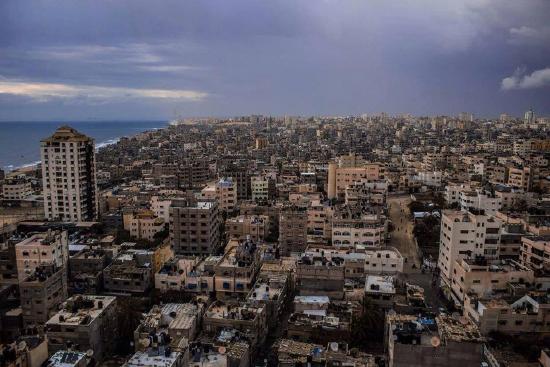
|
| Bethlehem | بيت لحم | Beit Lahm |
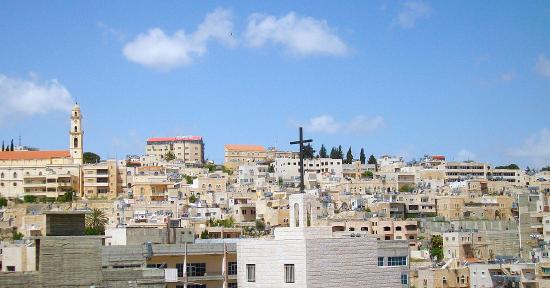
|
| Ramallah | رام الله | Ramallah |
|
Famous Historical Places
Syria
The video below presents a tour around Syria's capital city Damascus:
Umayyad Mosque - Damascus
The Umayyad Mosque (Al-Masjed Al-Umawi - المسجد الأموي) is located in the old city of Damascus. The site of the Umayyad Mosque has been a spot for worship since the Iron Age. During the age of the Aramaean State, it was a temple dedicated to the god of thunderstorms and rain Hadad-Ramman. After the Roman Empire conquered Damascus in 64 BCE, they assimilated Hadad-Ramman with their god of thunder Jupiter, and thus the temple became the Temple of Jupiter. In 391, the temple was converted into a cathedral by the Christian Emperor Theodosius. With the arrival of Islam during the Umayyad period, the Byzantine cathedral was still used by local Christians, but a prayer room (Musalla - مصلّى) was built for Muslims in the southeastern part of the building. Since the prayer room could not accommodate the increasing number of Muslims, the 6th Umayyad Caliph decided to construct a congregational mosque on the site of the cathedral in 706. It was completed in 715 after his death. It remains a Muslim mosque until the present day and is one of most famous touristic attractions in Damascus.
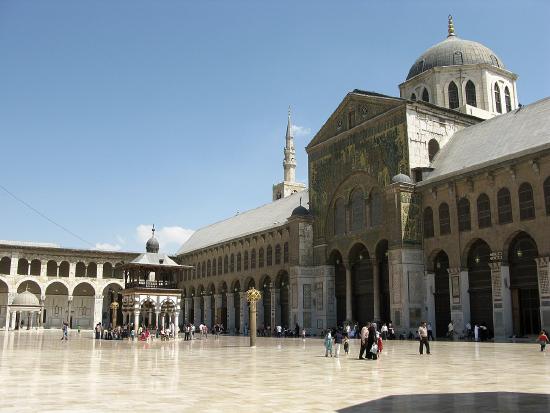
The Citadel of Aleppo - Aleppo
The Citadel of Aleppo (Qaleit Halab - قلعة حلب) is a castle located in the old city of Aleppo, northern Syria. It was built in the 3rd millennium BC. It witnessed many civilizations over time including the Armenians, the Greeks, the Byzantines, the Ayyubids, the Mamlouks, and the Ottomans. It is one of the most famous tourist attractions in Aleppo.

Norias of Hama - Hama
The Norias of Hama (Nawaeer Hama - نواعير حماه) are a series of 17 historic water-raising machines for irrigation, along the Orontes River in the city of Hama, Syria. It is thought that the norias date back to the late 12th century CE.

Lebanon
The video below presents a tour around Lebanon:
Roman Baths - Beirut
The Roman Baths (Al-Hammamat Al-Romanieh - الحمّامات الرومانيّة) is an ancient bath site in the Roman city of Berytus. The Roman bathhouse was a meeting place for all citizens. Roman Berytus had 4 bath complexes, the first of which was built in the 1st century. In 551 AD, the Berytus earthquake happened and destroyed the baths. Today, one of the baths is used for as a concert site.
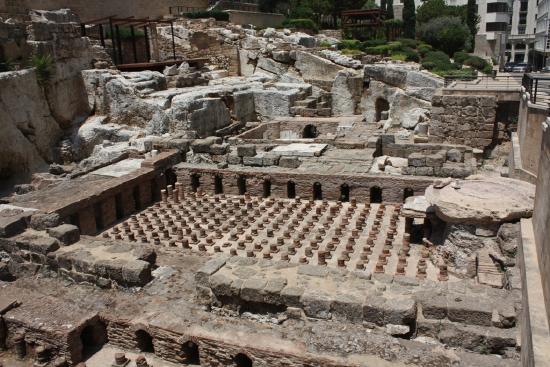
Byblos Citadel - Byblos
Byblos Citadel (Qalaat Jubail - قلعة جبيل) was built in the 12th century by the Crusaders. It was built from local limestones and the remains of Roman buildings. It is one of Byblos's most famous touristic attractions.
_3.jpg?revision=1&size=bestfit&width=551&height=358)
Temple of Jupiter - Baalbek
The Temple of Jupiter (Maabad Jupiter - معبد جوبيتر) was a Roman temple located in the temple complex of Baalbek, Lebanon. It was the biggest temple dedicated to Jupiter all around the Roman Empire. It took about three centuries to make, between 16 BC and AD 60.
.jpg?revision=1&size=bestfit&width=551&height=413)
Jordan
The video below presents a tour around Jordan:
Roman Theater - Amman
Amman's Roman Theater (Al-Mudarraj Al-Romani - المدرّج الروماني) is an amphitheater located in the eastern part of Amman, Jordan. It dates back to the 2nd century and consists of about 6,000 seats.
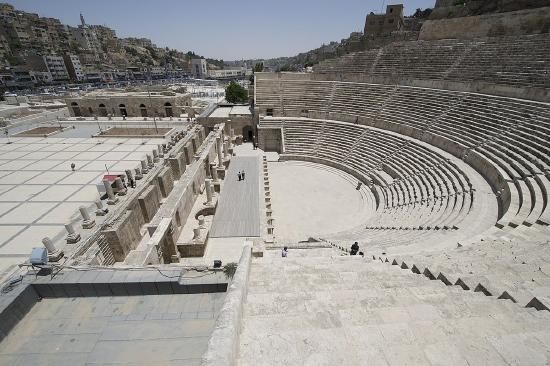
Petra - Southern Jordan
Petra (Al-Batraa - البتراء) is a historical and archeological city in the south of Jordan. It is believed that Petra was built around 312 BC. It is located about 150 miles south of both Jerusalem and Amman, the capital of Jordan, and about midway between Damascus, Syria, and the Red Sea, making it ideally suited as a hub of commerce in the area. It was thus established as a trading post by the Nabateans, who are an indigenous Bedouin tribe in Jordan.
.jpg?revision=1&size=bestfit&width=551&height=413)
Rum Valley - Southern Jordan
Rum Valley (Wadi Rum - وادي رَم), also known as Valley of the Moon, is the largest valley in Jordan and is cut into granite rock and sandstone. It has been inhabited by various cultures since prehistoric times, one of which was the Nabataeans who left behind petroglyphs, inscriptions, and temple.
.jpg?revision=1&size=bestfit&width=549&height=364)
Palestine
The video below presents a drone tour around one of Palestine's most famous cities Gaza:
Al Aqsa Mosque - Jerusalem
Al Aqsa Mosque (Al-Masjed Al-Aqsa - المسجد الأقصى) is an Islamic shrine located in the Old City of Jerusalem. It was build in 691-692 CE during the Umayyad period, situated on top of the site of the Second Jewish Temple, which in turn was built around 516 BCE to replace the destroyed Solomon's Temple. The last was destroyed by the Romans in 70 CE. Al Aqsa Mosque is the oldest surviving work of Islamic architecture.
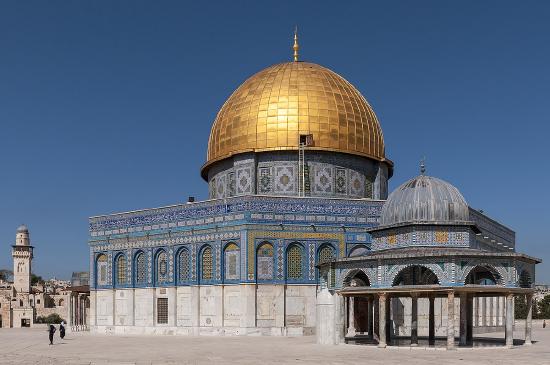
Monastery of Temptation - Jericho
The Monastery of Temptation (Deir al-Quruntul - دير القرنطل) is a Greek Orthodox monastery located near Jericho, Palestine. It is where Jesus is said to have been tempted by the devil during his 40 days of fasting. It now serves as a tourist attraction.
.jpg?revision=1&size=bestfit&width=551&height=367)
Khan Al Umdan - Acre
The Inn of the Columns (Khan Al Umdan - خان العمدان) is the best preserved Khan in Acre. It was built during the Ottoman Era and consists of forty colums made from granite. It was considered an important trading spot due to its proximity to the port. It now serves as a prominent tourist attraction in Acre.
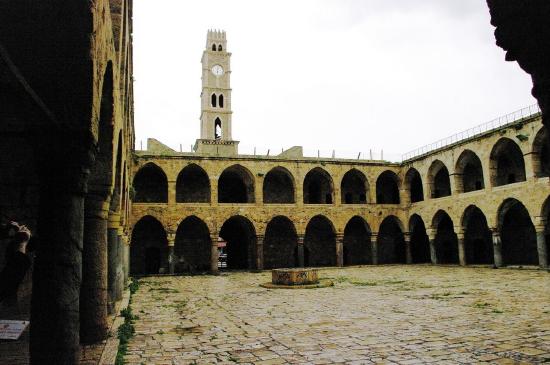
Traditional Food and Clothes
Traditional Food
The Levant countries are famous for their tasty dishes all over the world. Many dishes are found in common between all four Levantine countries with little to no difference in ingredients, but the names sometimes vary from one country to another.
| Region | Video |
|---|---|
| Traditional food in Syria | |
| Traditional food in Lebanon | |
| Traditional food in Jordan | |
| Traditional food in Palestine |
| Food in English | Food in Arabic | Recipe | Image |
|---|---|---|---|
| Shawarma (Chicken) | شاورما (دجاج) |
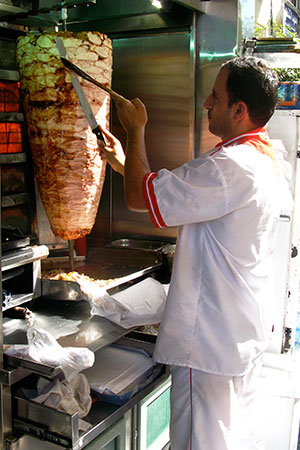
|
|
| Hummus | حمّص |
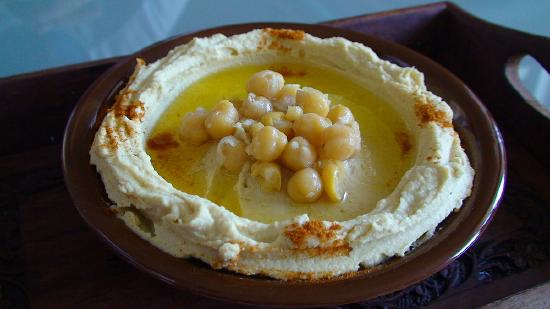
|
|
| Kibbeh | كبّة |
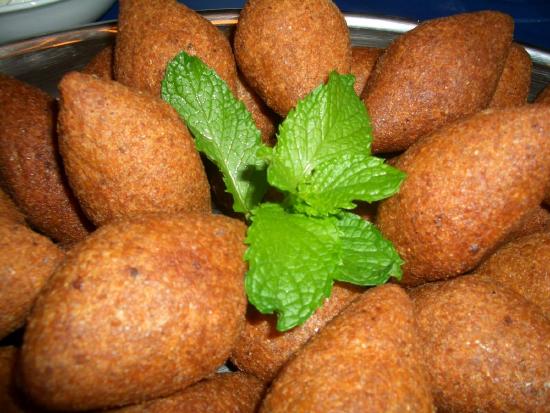
|
|
| Tabbouleh | تبّولة |
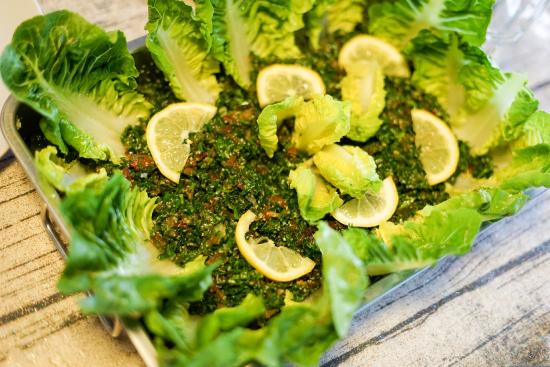 Tabbouleh; Pixabay License Tabbouleh; Pixabay License |
Traditional Clothes
In each of the Levantine countries, there are different traditional clothes that come as a result of different cultures and religious backgrounds of the different areas. This is why there is no single traditional clothing that we can call characteristic of the whole country. Traditional clothing is usually used in religious ceremonies, weddings, and/or other occasions, but is rarely, if at all, used in everyday life.
| Country | Clothes |
|---|---|
| Traditional Clothing in Syria |
.jpg?revision=1)
|
| Traditional Clothing in Lebanon |
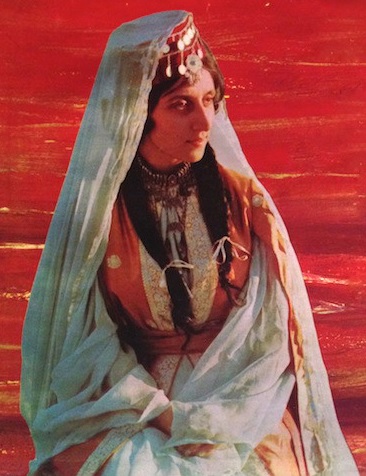
|
| Traditional Clothing in Jordan |

|
| Traditional Clothing in Palestine |

|
Activities
Put the name of the country under the correct flag:
Put the name of the city in the correct column:
Activity
You plan to travel with your family to Levant Countries (Jordan, Lebanon, Palestine, and Syria) during summer break. Use Google Earth to show your family the famous cities, and historical landmarks that you would like to visit.

